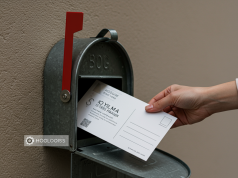In a world dominated by social media algorithms and pay-per-click bids, it’s easy to overlook the proven impact of traditional marketing. Yet, when executed thoughtfully, offline channels can create powerful brand touchpoints, build local trust, and complement your digital campaigns. In this comprehensive guide, we explore why traditional marketing still matters, highlight the most effective offline tactics, and show you how to integrate them seamlessly with your online efforts.
Why Traditional Marketing Still Matters
Despite skyrocketing digital ad budgets, 62% of consumers say they trust print ads more than online ads. Nielsen reports that outdoor advertising delivers an average ROI of 6:1, rivaling many digital channels. Traditional marketing isn’t about choosing between old and new—it’s about creating a holistic, multi-channel experience that reaches customers where they live their daily lives. Offline Marketing strategies can:
- Build tangible brand recognition with business cards, brochures, and posters
- Drive foot traffic via local events, direct mail, and outdoor signage
- Reinforce digital messages by extending them into the physical world
- Reach demographics that are less active online, such as seniors or rural communities
Key Offline Marketing Channels

1. Print Advertising
Print media—including newspapers, magazines, and trade journals—remains a trusted source of information. To maximize impact:
- Select publications with strong local circulation or niche audiences aligned with your product
- Design ads with bold headlines and clear calls-to-action (coupons, QR codes, vanity URLs)
- Run consistent campaigns over several weeks to build recognition
2. Direct Mail
Personalized postcards, catalogs, and dimensional mailers can cut through the digital noise. Best practices include:
- Segmenting your mailing list by geography, purchase history, or demographics
- Crafting attention-grabbing designs with a clear value proposition
- Including trackable elements like promo codes or dedicated landing pages
3. Outdoor & Transit Advertising
Billboards, bus shelters, and vehicle wraps offer constant exposure to commuters. To optimize your spend:
- Choose high-traffic locations near retail stores or event venues
- Keep messaging concise—viewers often have only 3–5 seconds
- Incorporate bold imagery and your brand’s primary color palette
4. Events, Trade Shows & Sponsorships
Face-to-face interactions build credibility and foster deeper connections. Consider these tactics:
- Host workshops, seminars, or product demonstrations
- Partner with local organizations for sponsorship opportunities
- Leverage branded giveaways that offer ongoing visibility
Designing an Integrated Campaign
Integration is key: your offline and online channels should reinforce one another. Start by defining a unifying theme or tagline that appears in every medium. Use QR codes or short URLs in print ads to drive recipients online, and amplify your event coverage through live streams and social posts. A synchronized calendar ensures consistent messaging and helps you track performance across touchpoints.
Audience Targeting & Personalization
![]()
Segmentation isn’t just for emails. You can apply the same principles to offline tactics:
- Geo-fencing data can inform where you place outdoor ads and which neighborhoods receive direct mail
- Purchase history enables customized mailing lists and tailored promo codes
- Demographic research dictates which print publications or radio stations you partner with
Personalization in direct mail can boost response rates by up to 40%, while targeted event invites can increase attendance and post-event conversions.
Measuring & Optimizing Offline ROI
Tracking offline performance may seem daunting, but these tools make it feasible:
- Unique promo codes, QR codes, and vanity URLs for each campaign
- Call tracking phone numbers tied to specific ads or mailers
- Google Analytics campaigns for URLs printed on collateral
- Surveys at the point of sale to ask customers where they heard about you
By comparing uplift before, during, and after your offline push, you can calculate cost per acquisition, incremental revenue, and lifetime value—just like you would with digital ads.
Success Stories & Best Practices
• Local Café Rebrand: A neighborhood coffee shop ran a postcard campaign highlighting a new seasonal menu. Coupled with targeted newspaper ads and an “Open House” event, foot traffic rose 28% in six weeks.
• Regional Retailer Expansion: Using geo-targeted transit ads and promo codes in local magazines, a clothing chain boosted store visits by 18% and gave digital remarketing audiences a compelling in-store incentive.
• Trade Show Launch: A B2B software vendor integrated print mailers, outdoor banners, and live demos at an industry conference—achieving a 22% conversion rate on qualified leads and a measurable uplift in brand searches online.
Conclusion: Embrace a Balanced Approach
Traditional marketing isn’t about nostalgia—it’s about adding depth and credibility to your brand narrative. By integrating offline channels with digital tactics, you create a seamless customer journey that builds trust, drives engagement, and maximizes ROI. Start by auditing your current mix, experiment with one new offline channel each quarter, and always track results so you can refine your strategy. In today’s crowded marketplace, the brands that stand out are the ones that master both pixels and print.
Ready to unlock the full potential of traditional marketing? Begin your integrated campaign today and watch your brand resonate—online and off.
Learn more about: Direct Mail Marketing: The Ultimate Guide for Modern Brands









